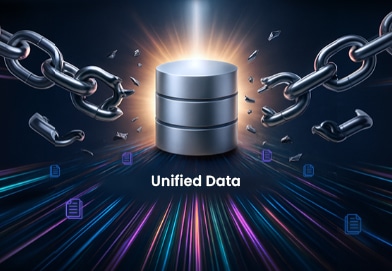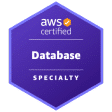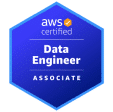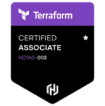How to Achieve Regulatory Compliance?
Data is the lifeblood of modern businesses. In today’s digital world, organizations generate vast amounts of data daily. This data can be extremely valuable for making informed decisions, improving operational efficiency, and driving business growth, but only if it’s accurate, secure, and properly managed. This is where data governance comes in.
In this article, we will explore data governance best practices, why it is essential, critical elements of data governance, and how organizations can ensure that their data governance practices are effective.
What is Data Governance, and Why is it important?
Organizations in various industries must comply with various regulatory requirements for data management, privacy, and security. The increasing complexity and volume of regulations can make compliance a significant challenge. Data governance plays a vital role in helping such organizations achieve regulatory compliance by establishing and enforcing policies and procedures related to data management.
Data governance is a systematic approach to managing and protecting data as an asset to ensure compliance with applicable laws and regulatory requirements. It encompasses a range of policies, procedures, and standards for data collection, use, maintenance, retention, and disposal. Data governance aims to ensure that data is used responsibly, efficiently, and effectively across an organization. It provides a framework for managing data assets to maximize their value while protecting their accuracy, security, and privacy. Here are a few key benefits of data governance:
High Data Quality
Data quality is a critical aspect of data governance. Poor quality data can lead to incorrect decisions and harm an organization’s reputation. With a well-defined data governance program, organizations can ensure that the data they collect is accurate, complete, and consistent. This helps to minimize errors and ensure that decisions are made based on accurate information.
Enhanced Data Security
With the increasing number of data breaches and cyber-attacks, organizations must protect their data from misuse and theft. Data governance helps to protect sensitive information and prevent unauthorized access. This is especially important in industries like healthcare and finance, where data security is critical.

Increased Data Availability
Effective data governance can help organizations to improve the speed and efficiency of data retrieval. With well-managed data, employees can quickly and easily find the information they need to do their jobs.
Better Data Compliance
Many industries are subject to regulations that govern the use and protection of data. For example, the healthcare industry must comply with the Health Insurance Portability and Accountability Act (HIPAA), which requires organizations to protect the privacy of patient health information. Data governance helps organizations ensure that they comply with such regulations by establishing policies and procedures that align with the relevant regulations, avoiding costly fines and legal issues.
Improved Data Sharing
Data governance policies can help organizations ensure that data is shared and used consistently and controlled. This is especially important for organizations with partners or multiple business units.
In conclusion, data governance can help organizations make informed business decisions, comply with regulations and industry standards, and effectively leverage data for business intelligence and analytics.
Key Elements of Data Governance
Data governance is critical to managing data in today’s digital age. Effective data governance involves various key elements that work together to support the organization’s data management goals. Organizations should consider the key elements of data governance outlined below and develop a comprehensive data governance plan to manage their data assets successfully.
Data Governance Framework
A data governance framework is a set of policies, procedures, and practices that govern how data is managed within an organization. The framework outlines the roles and responsibilities of individuals and teams involved in data governance and the processes and systems used to manage data. The framework should be reviewed and updated regularly to ensure its effectiveness and relevance.
Data Quality Management
Data quality management is the process of ensuring that data is accurate, complete, and consistent. This involves defining standards for data quality, monitoring data quality, and implementing processes to improve data quality. Data quality management is an ongoing process that requires continuous monitoring and improvement.
Data Security Management
Data security management is the process of protecting data from unauthorized access and theft. This includes defining security policies and procedures, implementing security controls, and monitoring data access and use. Organizations should have a plan to respond to security incidents and breaches.
Compliance Management
Compliance management ensures that an organization’s data governance practices align with relevant regulations and industry standards. This involves understanding the regulations that apply to the organization, defining policies and procedures to comply with these regulations, and monitoring compliance continuously.

Data Access and Use Management
Data access and use management is the process of controlling who has access to data and how it is used. This includes defining access permissions, monitoring data usage, and implementing processes to ensure that data is used in a manner that is consistent with the organization’s data governance procedures.
Data Architecture and Data Management
Data architecture is the design of the data structures and systems used to store and manage data. Data management refers to the processes and practices used to manage data throughout its lifecycle, from creation to disposal. Data architecture and management are critical components of data governance because they support data’s practical use and protection.
Data Metrics and Analytics
Data metrics and analytics are used to monitor and measure data quality, security, and compliance. Data metrics can help organizations to identify areas where governance practices need improvement and to track progress over time. Analytics can be used to gain insights into data usage patterns and identify trends that may indicate potential problems with data quality, security, or compliance problems.
Communication and Collaboration
Effective communication and collaboration are essential components of data governance. Data governance procedures should be communicated to all stakeholders, and regular meetings should be held to ensure that everyone is aware of the latest developments. Collaboration between different teams and departments is also essential to integrate data governance practices into the organization’s overall operations.
While data governance’s key elements and benefits are clear, implementing a governance program can be complex and challenging. The following section discusses data governance best practices and strategies for implementing a successful program.
Data Governance Best Practices & Strategies for Implementing a Successful Program
Data governance is essential to any organization’s information management strategy, but establishing an effective data governance plan is a complex process. There are several challenges faced by organizations when implementing a data governance program, which include lack of resources, lack of expertise in data management and analytics, inadequate budget allocation for data governance initiatives, and lack of commitment from senior management.
Best practices provide organizations with a framework for implementing successful data governance programs. These best practices include setting clear objectives, creating an effective data governance team, and establishing data quality assurance and security processes. It also involves developing policies and procedures to ensure compliance with regulations related to data privacy.
Here are some best practices to build an effective data governance program that will help your organization achieve its goals:
1. Establish a Data Governance Committee
The first step is to establish a cross-functional data governance committee. This committee should include representatives from different departments and business units, such as IT, finance, and marketing. The committee is responsible for defining data governance policies and ensuring they are followed throughout the organization.

2. Define Data Governance Policies
The next step is to define these policies. They should cover data quality, security, retention, and disposal areas. The policies should be clear, concise, and accessible to all employees.
3. Create Data Stewards
Data stewards are responsible for managing the day-to-day use of data within the organization. Data stewards ensure data is used correctly and policies are followed. It is essential to have data stewards across different departments to ensure that data governance is consistent across the organization.
4. Implement Data Governance Tools
Organizations need to have the right tools to manage data effectively. These tools can include data quality software, data mapping tools, and data catalogs. The right tools will help improve data quality and ensure data is used consistently across the organization.
5. Monitor and Evaluate
The final step is to monitor and evaluate the data governance program. This involves regularly reviewing policies, procedures, and standards to ensure they are still relevant and practical. It also involves tracking metrics such as data quality and security to ensure the program delivers the desired results.
Data governance is an ongoing process that requires commitment and investment from the entire organization. With the right policies, tools, and procedures, organizations can ensure their data is secure, accurate, and properly managed.
Tools & Technology for Your Data Governance
As organizations continue to generate and use more data, having a robust data governance program in place is becoming increasingly important. However, managing data can be complex and time-consuming, and without the right tools and technology, ensuring that data is being managed effectively can be challenging.
Several data governance tools and technologies can be used to support a data governance program and make compliance easier. Cloud-based solutions for data governance are becoming increasingly popular due to their scalability and cost-effectiveness. These solutions allow organizations to manage large amounts of data securely and efficiently while ensuring compliance with regulations. Automated compliance solutions also allow businesses to monitor their data in real-time, ensuring they remain compliant at all times. Other essential tools and technologies include:
1. Data Cataloging Tools: These tools help organizations centralize data assets, metadata, and associated business context, enabling better data discovery and use.

2. Data Quality Tools: These tools help organizations measure and improve the quality of their data by identifying and resolving data quality issues, such as completeness, accuracy, and consistency.
3. Master Data Management (MDM) Tools: These tools help organizations maintain a consistent and accurate master record of their critical business data, such as customer or product information.
4. Data Lineage and Metadata Management Tools: These tools help organizations track the lineage of their data, providing a complete understanding of how data moves through the organization and how it’s used.
5. Data Security and Privacy Tools: These tools help organizations ensure that their data is protected and compliant with relevant regulations and policies.
6. Policy and Workflow Management Tools: These tools help organizations establish and enforce data governance policies and workflows to ensure that data is managed in a consistent, transparent, and auditable way.
7. Artificial Intelligence and Machine Learning Tools: These tools can assist in automating data governance tasks, such as identifying data quality issues, data classification, and data discovery.
While the specific tools and technologies required will depend on the needs of the organization, it is clear that data governance is an essential part of any modern organization, and that the right tools and technology can make all the difference in ensuring its success.
Act Right Away
If your organization wants to establish an effective data governance program without the need to invest in new hires or training, contact us. Our team has expertise in helping companies like yours in implementing data governance solutions to achieve regulatory compliance.
We can assist you in setting up your data governance framework and guide you through the process of choosing the right tools and technologies for your organization going forward. Get in touch with the team at Data Sleek now.







